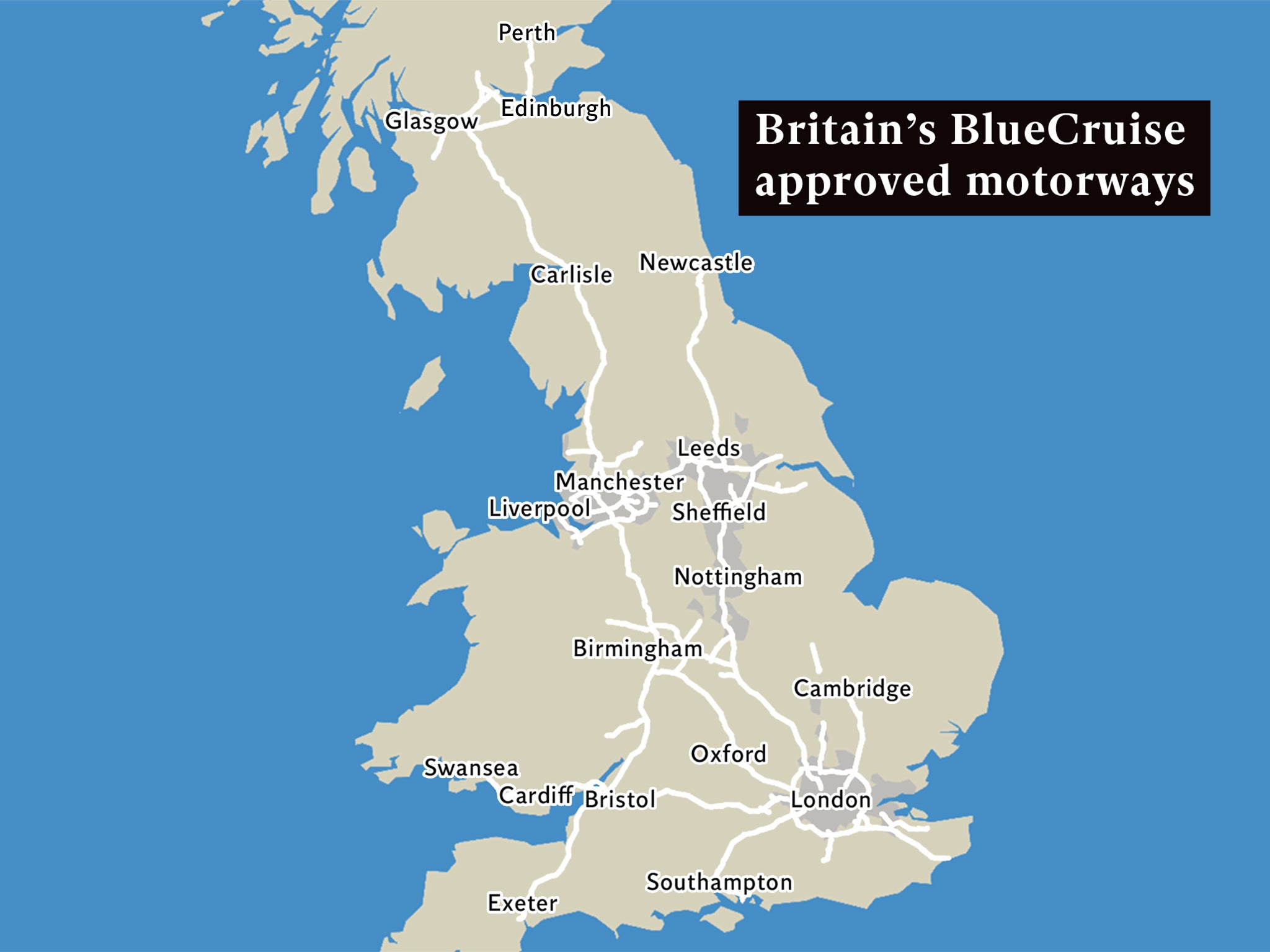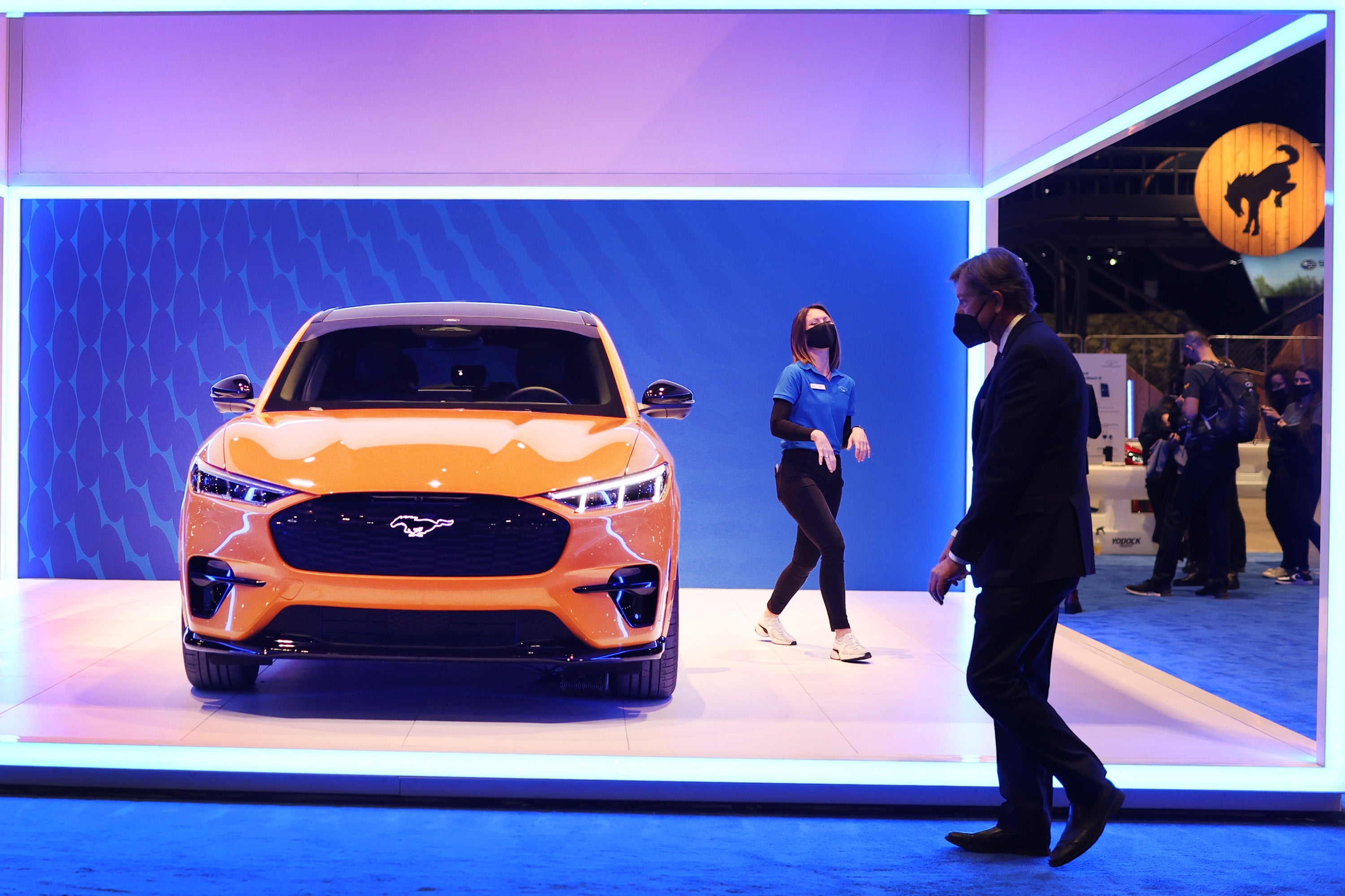Mapped: UK roads where cars are allowed to drive themselves with Ford tech
Perth to Exeter. Swansea to Cambridge. Where could your car take you?
The UK has become the first European country to allow cars to drive themselves on public roads, after the government gave Ford permission to activate its BlueCruise system.
Drivers will be able to take their hands off the wheel but must still pay attention to what the car is doing, with an alert system in place for if they are detected by internal cameras to be looking elsewhere.
Ford was given the go-ahead by the Department for Transport to launch BlueCruise, which is only available on the 2023 Ford Mustang Mach-E, a pure electric vehicle costing upwards of £50,000.
At a cost of £17.99 a month, BlueCruise will control steering, acceleration, braking and lane positioning, as well maintain safe and consistent distances to vehicles ahead. The system works by monitoring road markings, speed signs and evolving traffic conditions and will operate up to a maximum speed of 80mph.
BlueCruise has been approved for use on 2,300 miles of motorways, the vast majority of Britain’s network, meaning, in theory, a car could drive from Exeter all the way up to Perth without human intervention.
An infrared camera will check if drivers are keeping their eyes on the road. If it detects a driver is not paying attention, warning messages will be displayed on the dashboard, followed by audible alerts and then the automatic slowing of the vehicle.
The same process happens if a vehicle leaves a motorway.
Lisa Brankin, Ford’s managing director for the UK and Ireland, said the system makes motorway driving “a more comfortable experience” – though safety fears remain.
A 2019 study by the RAC Foundation, based on University of Nottingham research, suggested many motorists using self-driving technology would not be prepared to take over control when needed.

In a sign of other hurdles the technology faces, government research suggests delays may rise by up to 85 per cent from 2025 to 2060 if self-driving cars become commonplace.
Fully self-driving cars remain banned on public roads in the UK apart from during government-approved trials. Legislation to approve full-autonomy could be introduced as early as 2025.
Britain is experimenting with the technology in the meantime. Last month, two self-driving Nissan electric cars were trialled on busy A roads in London. On 15 May, Scotland will set five autonomous buses loose over the Firth of Forth.
The buses will feature a “Level 4” assistance system, placing them further towards full autonomy than the Mustang, though human “drivers” will be on board for safety. There are six levels of autonomous driving, as defined by the Society of Automotive Engineers.

Level 0 accounts for features already common such as warning lights and automatic emergency braking, while a Level 5 car will be able to drive itself anywhere. Pedals and steering wheels need not be installed in cars Level 4 and up.
Ford’s BlueCruise technology classes as a “Level 2” assistance system, which still requires a human driver to take control should something go wrong.
There are six levels of autonomous driving, as defined by the Society of Automotive Engineers. Level 0 accounts for features such as warning lights and automatic emergency braking, while a Level 5 car will be able to drive itself anywhere. Pedals and steering wheels will not need to be installed in cars Level 4 and up.
Ford engineers conducted test drives of its latest assistance systems, including BlueCruise, covering 100,000 miles on European roads.
Testing in Britain featured routes with hazards such as worn-out lane markings poor weather and roadworks. Ford said it will roll out BlueCruise to more of its vehicles “in the coming years”.

The system was introduced in the US and Canada last year. Ford said that in the last couple of years, more than 190,000 Ford and Lincoln vehicles have covered more than 60 million miles using the technology with no accidents being reported.
Following the activation of Ford’s system on Thursday, Steve Gooding, director of the RAC Foundation, said: “Fully driverless cars offer the prospect of a big safety gain by removing the human errors behind so many crashes, but human error will still be with us while we have a mixed fleet of vehicles being driven as well as driving themselves.
“The technology being launched now is not fully autonomous, it is dependent on the driver being ready to intervene, and our research found that it is this ‘hand back’ to the driver that poses the biggest challenge.”
Mr Gooding also stressed the importance of drivers understanding the limits of their vehicles, particularly once they enter the second-hand market with no direct contact between manufacturers and owners.
He added: “Ironically, as we enter this new world of cars controlling themselves, drivers might actually need more training rather than less, so they fully understand a vehicle’s capabilities.”
AA president Edmund King predicted there will be “more changes in automotive technology in the next 10 years than we have seen in the last 50 years”.
Join our commenting forum
Join thought-provoking conversations, follow other Independent readers and see their replies
Comments



Bookmark popover
Removed from bookmarks